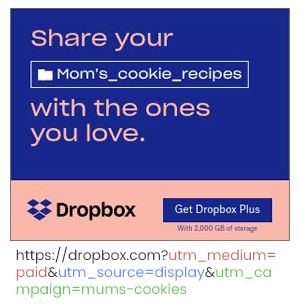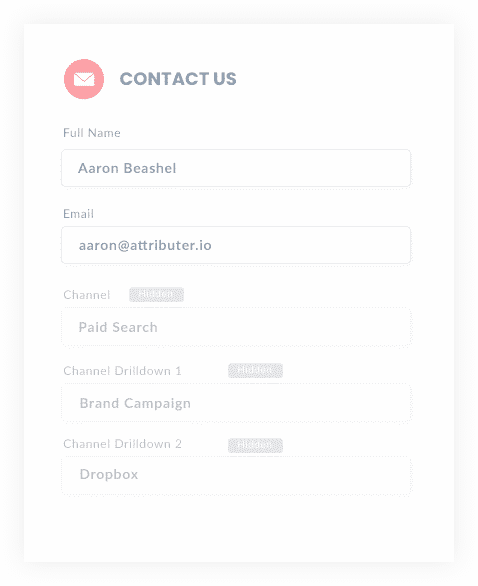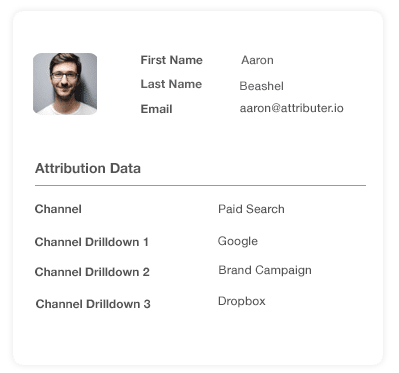The easiest way to capture UTM parameters in your Bubble.io app
Learn how to capture UTM parameters in your Bubble app and save them to your database or send them to your CRM, billing, analytics and other tools.

Knowing the channels and campaigns that produce the most signups & customers is essential for growing your Bubble app.
But unfortunately, Bubble doesn't capture this information about signups out of the box. So how are you supposed to know where your signups and customers are coming from? And by extension, how are you supposed to know which of your marketing initiatives are working and which one's aren't?
In this article, we'll show you how to use the Attributer plugin to capture UTM parameters in your Bubble.io app and either store them in your database or send them through to your CRM, billing & analytics tools for reporting.
4 steps for capturing UTM parameters in Bubble
Using Attributer to capture UTM parameters in your Bubble app is easy. Here's how to do it in 4 easy steps:
1. Add UTM variables to your ads

First, you will need to ensure that all the ads and marketing campaigns you're running are using UTM parameters.
Attributer will then use these parameters to understand where your signups are coming from and send them to your CRM & other tools for reporting.
UTM parameters should be added to all marketing and advertising campaigns in order to get the most accurate data. This includes social media ads, search engine marketing, guest blogs, advertising in trade magazines; etc.
2. Install the Attributer plugin

Your next step is to install the Attributer plugin from the Bubble marketplace.
To install it, search for 'Attributer' in the Bubble marketplace and then place the Attributer element on your signup page.
Once on the page, Attributer will make the UTM parameters and other attribution information available to use in Workflows, so you could modify your signup workflow to save the UTM parameters to your database or send them to your CRM and other tools via API calls, Segment or Zapier.
You can see full step-by-step instructions for installing Attributer in this help article.
3. Attributer automatically captures the UTM parameters

Now for the fun part! Attributer will monitor visitors to your website for UTM parameters and store them in a cookie. Then, when a user signups up for your app the data will be made available to your workflows.
To illustrate, let's imagine you've created a file storage app called Boxdrop and you're running Google Ads to help attract customers.
A person searches Google for "ways to share large files' and finds your ad in the paid results. The user then clicks the ads, lands on your website and eventually signs up for an account
In this case, Attributer would pass through the following information (depending on what UTM parameters you are using):
- Channel = Paid Search
- Channel Drilldown 1 = Google
- Channel Drilldown 2 = Share Files Campaign
- Channel Drilldown 3 = Free Account Ad
On top of this, Attributer would also include the landing page information, which would likely look something like this:
- Landing Page = www.boxdrop.com/features/share
- Landing Page Group = Features
4. UTM parameters are passed into your tools

Finally, the UTM parameters and other attribution information is fed into your workflows and saved to your database, sent to your various sales & marketing tools, etc.
And once the data is saved somewhere, you can use it to run reports that answer questions like:
- How many leads did our Google Ads generate?
- How many customers did our Google Ads generate?
- How much revenue have we generated from our Google Ads?
- What's the ROI of our Google Ads?
What is Attributer?
In this post, we've used the term Attributer a few times, and you're probably wondering what it means and why it's significant to you.
Here's the lowdown:
Attributer is a SaaS product with a dedicated Bubble plugin. When you add it to your marketing website and/or Bubble app, it looks at a bunch of technical information about how each visitor arrives at your website (like their device, referrer, UTM parameters, etc).
It then categorises each visitor into channels similar to those found in Google Analytics (such as Paid social, Paid search, Organic search, etc). It then stores that information in a cookie in the user's browser.
Then, when a visitor signs up for your Bubble application, the UTM parameters and other Channel data get sent to wherever you need ti via Bubble workflows.
Attributer was founded by a fellow Bubble user who needed a way to understand which marketing channels & campaigns were generating signups and customers for his application.
Although it was originally built for his own internal use, he realised it could be useful for others and so turned it into a SaaS product.
Today, Attributer is used on hundreds of websites and provides attribution information for over 1.8 million visitors to those sites every month.
Why using Attributer is better than capturing raw UTM parameters
It's possible to use the 'Get data from URL' to capture UTM parameters in your Bubble app, but that approach isn't designed for capturing UTM parameters and therefore has many issues that will result in incomplete and inaccurate data.
Here's why using Attributer is so much better:
1. Captures all traffic
Not only does this Attributer capture UTM parameters and make them available in Workflows, it also captures information on people who arrive at your website from channels where UTM parameters aren't present (Like Organic Social, Organic Search, Direct, Referral, etc.)
This means that when you run reports to see where your signups & customers are coming from, you'll be able to see the source of all your signups and not just the ones that have come from your paid campaigns.
2. Works on your entire website & app
Pulling UTM parameters from the URL and saving them to your Bubble app requires the UTM parameters to actually be present on the signup page of your application.
To illustrate why this is a problem, imagine someone clicks one of your Google Ads and goes to your main marketing website. Once they’re convinced your product is amazing, they click the ‘Create An Account’ button and are taken to your Bubble app to signup for an account.
This would mean that the page they signup on is not the same page they originally landed on, so the UTM parameters are lost.
Fortunately, Attributer takes a different approach. It stores the UTM parameters in a cookie in the user’s browser, meaning that even if the user lands on your main marketing website first (and your main marketing website is built using another tool), the data will always be available in your Bubble app.
3. Provides cleaner data
When you capture UTM parameters in their raw form, you frequently end up with a lot of disorganized data.
For instance, imagine some of your Google Ad campaigns are tagged with UTM_Source=Google (capitalized), others with UTM_Source=google (uncapitalized), and others with UTM_Source=adwords.
If you were just capturing the raw UTM parameters and sending them through to your CRM, this would look like 3 different sources in your reports and it would be hard to understand how successful your Google Ads are.
Fortunately, Attributer helps with this too. Regardless of capitalization or other irregularities, Attributer would still be able to assign these leads to the Paid Search channel.
4. Captures landing page data as well
Ever wanted to know how many leads and customers come from your blog? Or those in-depth content pieces you spent hours writing?
Attributer not only captures UTM parameters and other channel data, but it also captures the landing page (I.e. attributer.io/blog/capture-utm-parameters) and the landing page category (I.e. /blog).
This means that you can see how well certain sections of your website are performing (I.e. your blog) in terms of generating leads, customers & revenue.
And because it captures both the landing page and the landing page group, you can look at how content groups as a whole are performing (I.e. your blog) as well as how individual pages or pieces of content are performing (I.e. individual blog posts).
Wrap up
Although it is possible to pull UTM parameters from the URL in Bubble, Attributer provides a lot of functionality that helps ensure you get more accurate data.
It provides information on all sources of traffic to your website (not just traffic from campaigns tagged with UTM parameters) and ensures that it doesn't get lost as people move between your main marketing website and your Bubble app.
Interested in seeing how Attributer can work for you? Get a 14-day free trial to find out if it is right for your needs.
Get Started For Free
Start your 14-day free trial of Attributer today!

About the Author
Aaron Beashel is the founder of Attributer and has over 15 years of experience in marketing & analytics. He is a recognized expert in the subject and has written articles for leading websites such as Hubspot, Zapier, Search Engine Journal, Buffer, Unbounce & more. Learn more about Aaron here.
